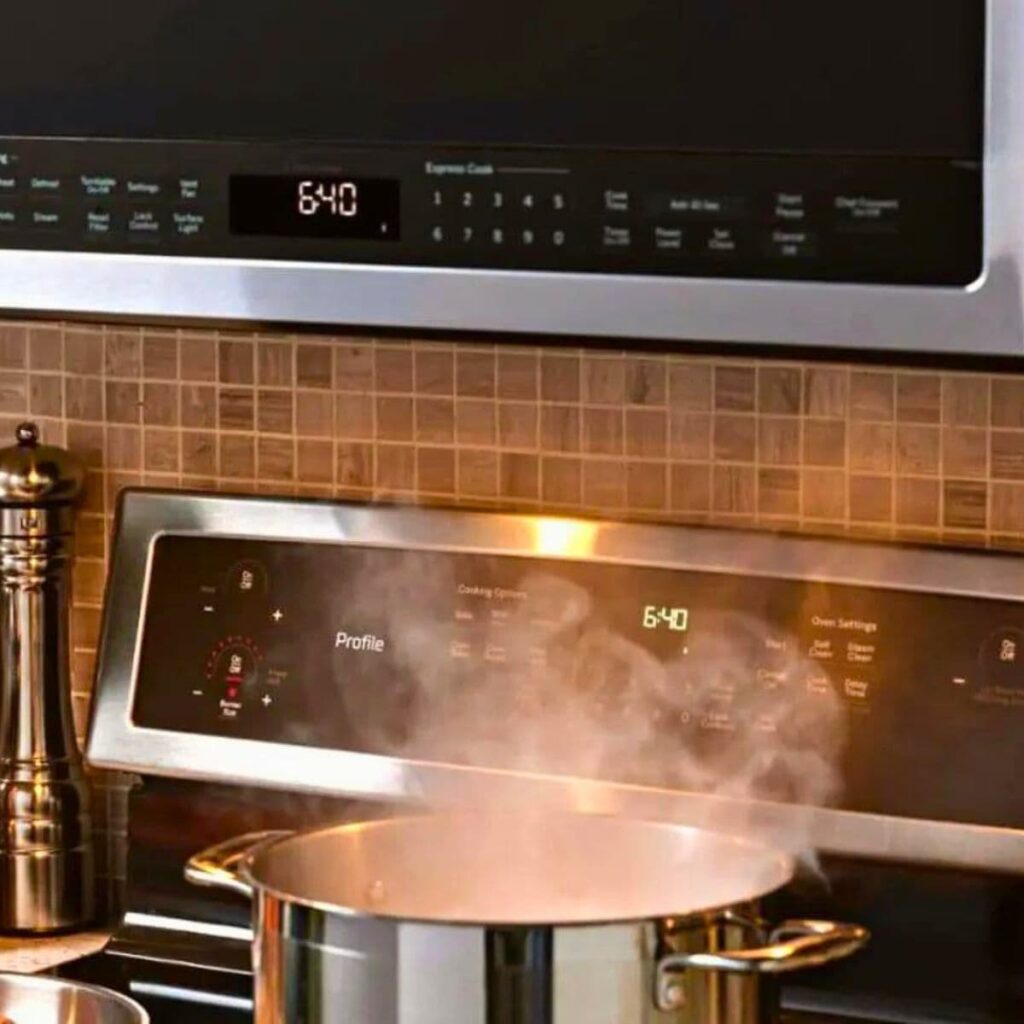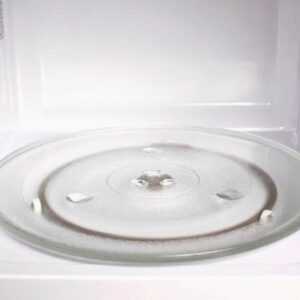If you’ve recently been considering shopping for a new appliance, there’s always some lingo out there that you’re just not quite sure what it means. Well, today, we’re going to answer: what is a convertible vent on a microwave?
That’s right, if you’re shopping for an over-the-range microwave, you’ve probably seen this term on more than one model. But, what does it mean?
The short answer is: a convertible vent on a microwave means that the fan of the microwave can be swapped between venting out through an external duct system, or releasing internally through a filter system.
So let’s dive more in depth so you can decide what the right option for your kitchen is. I’m here to help you be better informed when it comes to your next microwave!

What Are the Different Types of Microwave Vents?
The three different types of microwave vents are:
- Ducted (also known as vented). This type of vent pushes air through ductwork so that it is released externally from your home. It is a top-vented microwave style
- Non-Ducted (also known as recirculating or updraft). A non-ducted vent has no external venting system. Instead, it recirculates fan air through a filter to clean it, and then releases it back into the air of your home. This is a bottom-vented microwave
- Convertible. The convertible vent allows a microwave to be swapped between ducted or non-ducted functions as needed, so it may be top or bottom venting. Thus, this unit works with nearly any home’s construction
The type of vent you require will depend on if external ductwork is present in your kitchen or not. If you have a vented range hood, then the ducts are likely already in place. However, since this is an additional expense to install, most non-gourmet kitchens don’t have this.
Of course, going with a convertible means that you can make it work, even if you’re not sure what you have. Plus, if you move and happen to take your microwave with you, you can be assured it’s likely to work in your new setup as well.
What is the Difference Between a Convertible and a Recirculating Vent on a Microwave?
When it comes to the difference between a convertible and a recirculating vent on a microwave, a convertible vent will have a recirculating option, but not all recirculating microwave vents are convertible.
A convertible vent option on a microwave may be swapped between recirculating or ducted output. Without a convertible option, then a recirculating vent may only function as a recirculating vent: releasing filtered air internally back into the room.
Does an Over the Range Microwave Need to be Vented Outside?
No, an over the range (OTR) microwave does not need to be vented outside. That said, for it to be useful when recirculating air back into the room, the filters need to be cleaned and changed regularly.
Learn more about How to Reset the Filter on a GE Microwave to understand what this maintenance entails.
It should also be noted that a recirculation system will not effectively clear smoke like an external system will. So, while effective for most normal cooking, it does have its limitations versus the external.
What Does a Convertible Vent Hood Mean?
A convertible vent hood functions much like a convertible vent microwave, except it lacks the actual microwave appliance. A convertible vent hood is installed above the stovetop range and may be swapped between internal and external venting options to release cooking smoke.
That means that you can’t actually cook with it, like you can a microwave. However, the vent hood is still used during cooking, but as a tool combined alongside a traditional gas or electric stovetop range.
Is a Hood Vent Better Than a Microwave Vent?
A hood vent contains stronger air movement and filtration options, so it is considered better than a microwave vent purely for the dispersal of cooking fumes.
However, if your primary use is to have a microwave available for cooking in addition to the venting function, then a microwave vent will be more useful.
How Do You Know If a Microwave is Recirculating?
To know if a microwave is recirculating, turn on the fan and place your hand under the unit. If you feel air moving past your hand, it is recirculating.
If you do not feel the movement of air, then the microwave is venting upwards through ductwork. So, it is likely ducted, or possibly a convertible vent microwave that is set for ducting.
In Conclusion
Now you know what a convertible vent is on a microwave. In addition, you know how to tell what type of venting system your current microwave uses, and what the different types of vents are.
I hope that this aids you in choosing the correct microwave for your new home, or replacing an existing microwave.
Of course, you can always switch to a countertop model and get a vent hood for your range instead. It largely depends on your priorities and cooking styles, but I’m sure you’ll find the perfect fit for you.
More Microwave Guides to Check Out
- How to Get the Burnt Popcorn Smell Out of a Microwave
- 7 Ideas for What to do With an Old Microwave
- How Much Does a Microwave Weigh?
- Why Does My Microwave Keep Tripping the Breaker?
- How Hot Does a Microwave Get?
- Microwave Refried Beans: Easy Mexican Style Side Dish! - April 18, 2024
- Air Fryer Crunchwrap Supreme: Taco Bell Copycat Recipe! - April 18, 2024
- Sopapilla Cheesecake Air Fryer Recipe: Dessert Bars! - April 17, 2024









